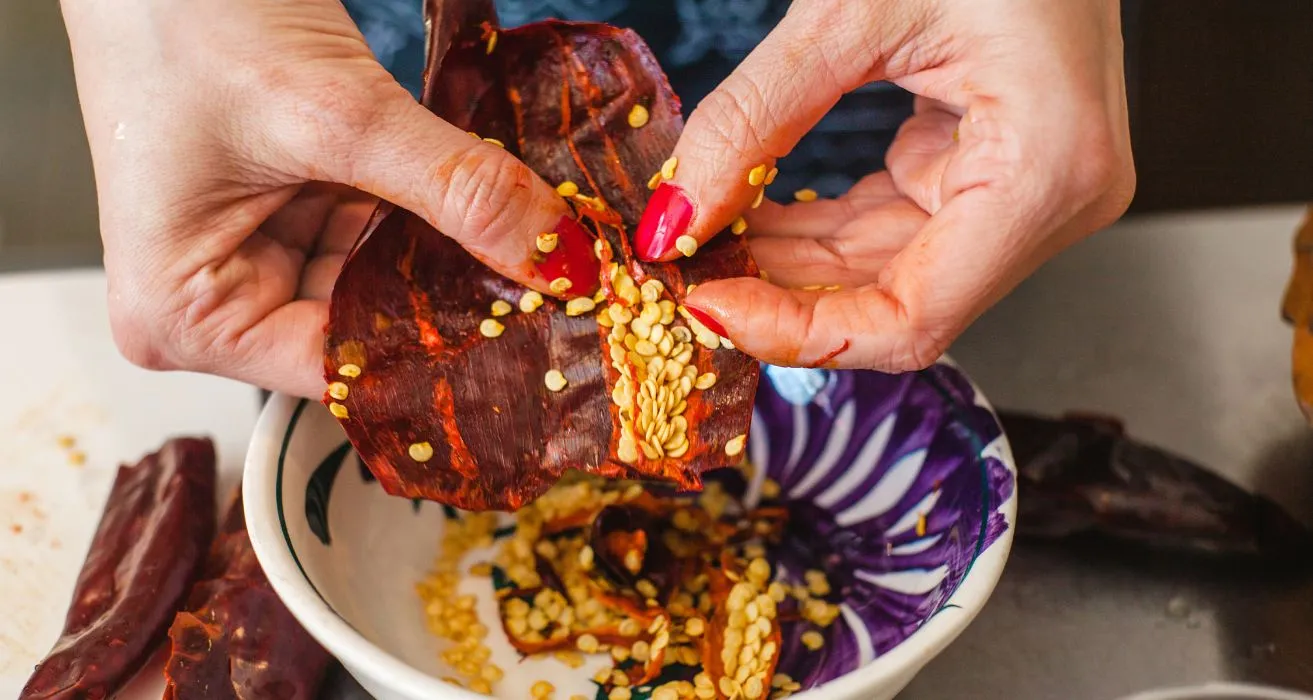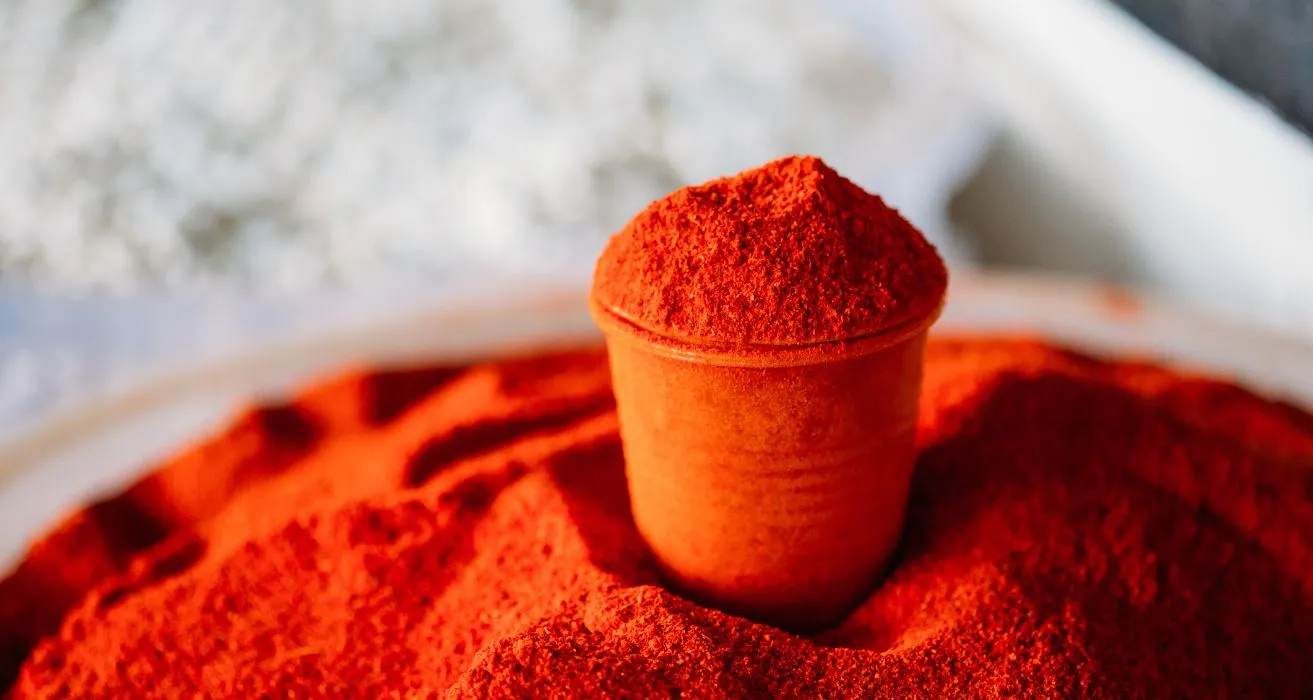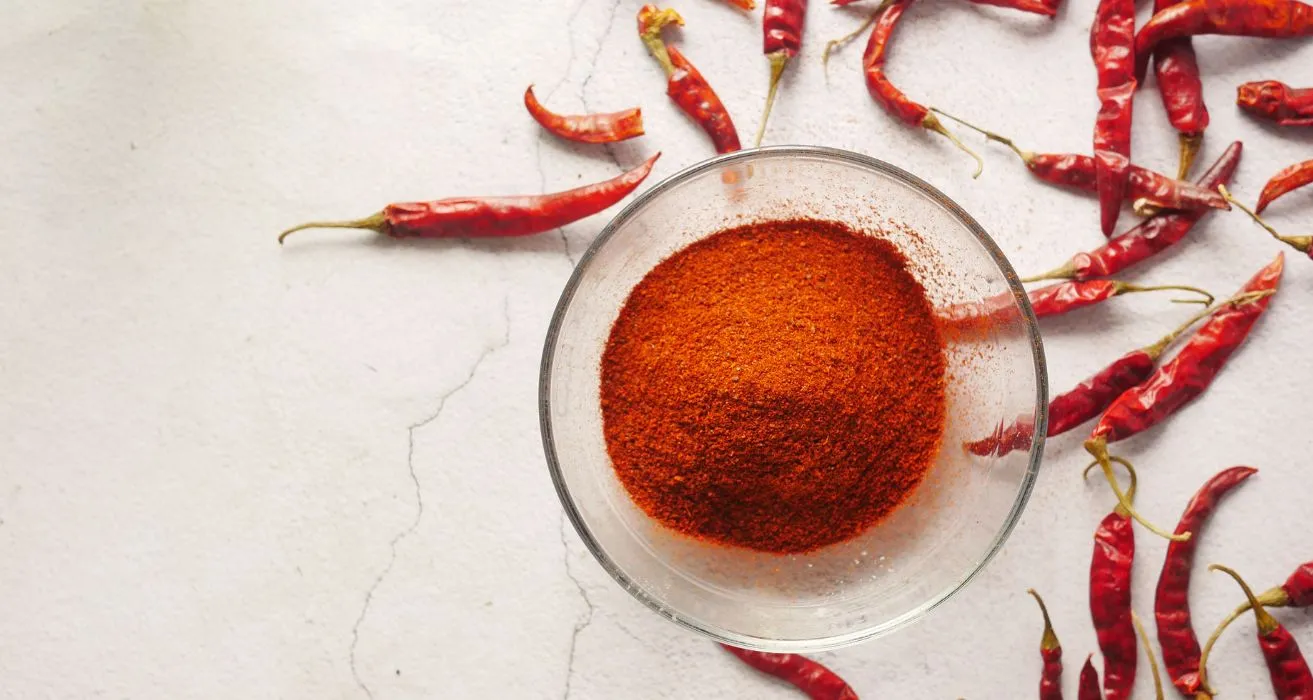Dive into the vibrant world of flavors with an exploration of ancho chili powder, a staple in kitchens where the warmth of Mexican cuisine brings life to dishes. This guide unravels the mysteries behind its smoky sweetness, offers DIY tips, and celebrates its culinary versatility. Ready for a spicy adventure? Let’s embark on this flavorful journey together.
Introduction
What Is Ancho Chili Powder?
Ancho chili powder lights up the culinary scene with its unique blend of sweetness and smoke. Made from dried poblano peppers that have ripened to a rich red hue, this powder is a treasure trove of flavor. Not just any spice, it’s the heart of Mexican cooking, turning simple meals into memorable feasts.
Origin and Cultural Significance
The roots of ancho chili powder run deep in Mexican soil. Here, food tells stories of heritage and tradition. Poblano peppers, the essence of ancho powder, start life as green, unassuming fruits. Left to bask under the sun, they don a crimson coat and transform into the beloved anchos. This metamorphosis is celebrated in kitchens across Mexico, where anchos are the most cherished peppers.
Understanding the Unique Flavor Profile
Is Ancho Chili Powder Hot?
Contrary to fiery expectations, ancho chili powder is more a whisper of heat than a shout. It’s the milder cousin in the chili family, known more for its smoky whispers and sweet echoes. This balance makes it a versatile player in the spice cabinet, ready to add depth without overwhelming the palate.
The smoky and sweet undertones of ancho chili powder are its signature. These flavors are a bridge between the earthy robustness of the pepper and the subtle heat it carries. It’s this complexity that has made this powder a beloved ingredient in kitchens far beyond the borders of Mexico.
The Making and Uses of Chili Powder

Making your own ancho chili powder at home is a breeze and a fun way to dive into the world of spices. Begin with dried ancho peppers, the soul of this powder. Here’s how you can create this culinary gem:
- Remove the seeds: Cut the dried pepper open and gently scrape out all the seeds.
- Grind: Cut the pepper into 1-2 inch pieces. Then, blitz in a grinder or food processor until finely ground.
Voila! You’ve crafted homemade ancho chili powder. A 2oz package of ancho peppers yields about 1/4 cup of powder. It’s that simple!
Culinary Applications
This chili isn’t just a spice; it’s a passport to flavor town. Its warm, smoky heat finds a home in numerous dishes, enhancing everything from meats to vegetables. Here are a few ways to let it shine in your kitchen:
- Spice rubs: Transform meats into savory delights with a rub of ancho powder.
- Soups and chili: Add a depth of flavor that’s hard to match.
- Sauces and marinades: Bring a smoky sweetness to your favorite concoctions.
Incorporating Ancho Chili Powder in Recipes
Cedar Plank Salmon with Strawberry Salsa
Ingredients:
- 1 cedar plank, soaked
- 2 salmon fillets
- 2 tsp ancho chili powder
- Salt and pepper to taste
- 1 cup chopped strawberries
- 1/4 cup finely diced red onion
- 1 jalapeno, seeded and minced
- Juice of 1 lime
- 1 tbsp chopped cilantro
Directions:
- Preheat your grill to medium-high.
- Season salmon with ancho chili powder, salt, and pepper.
- Place on the cedar plank and grill for 12-15 minutes.
- Mix strawberries, onion, jalapeno, lime juice, and cilantro for the salsa.
- Serve salmon topped with fresh strawberry salsa.
Mexican Chopped Salad with Poblano Dressing
Ingredients:
- 2 cups chopped romaine lettuce
- 1 cup canned black beans, rinsed
- 1 cup corn kernels
- 1/2 cup diced tomatoes
- 1/4 cup ancho chili powder spiced grilled chicken, chopped
- 1/4 cup diced red onion
- For the dressing:
- 1 roasted poblano pepper, peeled and seeded
- 1/4 cup cilantro
- Juice of 1 lime
- 1/4 cup olive oil
- Salt and pepper to taste
Directions:
- Combine all salad ingredients in a large bowl.
- Blend poblano pepper, cilantro, lime juice, olive oil, salt, and pepper until smooth for the dressing.
- Drizzle dressing over the salad and toss well.
Sweet & Smoky Homemade BBQ Sauce
Ingredients:
- 1 cup ketchup
- 1/2 cup water
- 1/4 cup apple cider vinegar
- 1/4 cup brown sugar
- 2 tbsp ancho chili powder
- 1 tbsp smoked paprika
- 1 tsp garlic powder
- Salt and pepper to taste
Directions:
- Combine all ingredients in a saucepan over medium heat.
- Bring to a simmer and cook for 20 minutes, stirring occasionally.
- Use as a glaze for meats or a dipping sauce.
In these recipes, ancho chili powder plays the starring role, showcasing its versatility and ability to elevate dishes with its distinct flavor. Stay tuned for Part 3, where we’ll explore more on the storage, substitutions, and FAQs surrounding this beloved spice.
Storage, Substitutions, and FAQs
Proper Storage Tips
To keep this chili powder at its flavorful best, store it correctly. A cool, dry place is ideal, away from direct sunlight. An airtight container, like a sealed glass jar, preserves its smoky sweetness. While it shines brightest within six months, it remains a culinary ally well beyond.

Substitutions for Ancho Chili Powder
Sometimes, the spice rack runs low. Fear not! For the smoky flavor that ancho powder is loved for, pasilla and guajillo peppers step up. They echo the sweet, smoky notes, making them excellent stand-ins. For heat, chipotle or cayenne pepper can pinch-hit, with chipotle bringing a closer match thanks to its smokiness.
FAQs
What’s the difference between chili powder and ancho chili powder?
While both spice up dishes, there’s a clear distinction. Chili powder is a mix, often spicier and lacking the unique smoky sweetness of ancho chili powder, which is pure ancho peppers.
Is ancho chili powder the same as chipotle?
No, they’re different players in the spice game. Both may share smoky vibes, but ancho chili powder comes from dried poblanos, while chipotle is born from smoked jalapenos.
Is ancho chili powder smoky?
Absolutely! Its natural smoky and sweet character is what sets ancho chili powder apart, making it a favorite in kitchens far and wide.
What is the difference between chili powder and ancho chili powder?
Chili powder is a blend of ground chili peppers and other spices, such as cumin, garlic powder, and oregano. On the other hand, this chili powder consists purely of dried and ground ancho chilies, which are a type of dried poblano pepper. Consequently, this chili powder offers a specific flavor profile, while regular chili powder provides a more complex taste due to its varied ingredients.
What is a substitute for ancho chili powder?
If you’re unable to find ancho chili powder, a suitable substitute is a mix of regular chili powder and a pinch of smoked paprika. This combination mimics the mild heat and smoky sweetness of ancho chili powder. Alternatively, mulato or pasilla chili powders can serve as closer substitutes, given their similar flavor profiles.
Is ancho chili powder very hot?
This chili powder is considered mild to moderately spicy. It ranks between 1,000 to 2,000 on the Scoville Heat Unit scale, which measures the spiciness of chili peppers. Therefore, it adds a subtle heat and a deep, fruity flavor to dishes, making it versatile for various culinary applications.
What is the flavor of ancho chili powder?
The flavor of ancho chili powder is characterized by its mild heat, combined with smoky, sweet, and slightly fruity undertones. It also possesses a hint of raisin and chocolate, enriching dishes with a complex depth of flavor that is not overwhelmingly spicy.
Which is hotter ancho or chipotle chili powder?
Chipotle chili powder is hotter than ancho chili powder. Chipotles are smoked and dried jalapeños, with a Scoville Heat Unit range of 2,500 to 8,000, making them significantly spicier than the milder ancho chilies.
Why use ancho chili powder?
This chili powder is favored for its unique blend of mild heat and rich, smoky sweetness. It’s versatile in the kitchen, enhancing the flavor profile of sauces, marinades, stews, and spice rubs without overpowering dishes with spiciness. Additionally, its depth of flavor adds complexity to recipes, making it a popular choice among chefs and home cooks alike.
Is guajillo the same as ancho?
Guajillo and ancho chilies are not the same. Although both are types of dried peppers, they differ in flavor and heat level. Guajillo chilies are a bit spicier and have a tangier, brighter taste compared to the milder, sweeter, and more earthy flavor of ancho chilies.
Is ancho chili powder the same as paprika?
Ancho chili powder and paprika are not the same. Paprika is made from ground bell peppers and can range from sweet to hot, offering a different flavor profile. In contrast, ancho chili powder is specifically made from dried ancho chilies, providing a unique taste that is smoky, with mild heat and sweet undertones.
What is the closest chili to ancho?
The closest chili to ancho in terms of flavor and heat is the pasilla chili, also known as chile negro. Pasilla chili powder is similar to ancho but has a slightly more intense earthiness and a bit more heat, making it a good alternative when ancho chili powder is not available.
Is ancho chili powder worth it?
This powder is considered worth it by many culinary enthusiasts for its ability to add a distinct, rich flavor to dishes without overwhelming heat. Its versatility in both sweet and savory recipes, along with its unique taste profile, makes it a valuable spice in the kitchen.
Nutritional Benefits and Historical Significance
The Healthful Side of This Spice
Ancho chilis, the source of this rich powder, are not just about flavor. They’re packed with vitamins and minerals, offering a range of health benefits. Rich in vitamin A, C, and antioxidants, they support eye health, boost immunity, and may even fight inflammation. The capsaicin in chilis, which gives them their mild heat, has been linked to metabolic benefits, including improved energy expenditure.
A Glimpse into Its Origins
Tracing back to ancient Mexico, the poblano pepper, which dries into an ancho chili, has been a staple in local diets for centuries. Cultivated by the indigenous peoples of Mexico, these chilis have woven their way through the fabric of Mexican culinary history, becoming a symbol of the nation’s rich and diverse food culture. They’re celebrated not just for their flavor but for their role in traditional medicine and cultural ceremonies.
Incorporating Into a Healthy Diet
Adding this spice to your meals is not just a taste decision but a health-conscious one too. Here are a few tips for incorporating it into your diet:
- Spice Up Your Vegetables: A sprinkle of this powder can transform roasted or sautéed veggies into a tantalizing side dish.
- Healthy Seasoning for Proteins: Whether it’s chicken, tofu, or beans, a bit of this spice ensures a delicious, healthful meal.
- Boost Your Breakfast: Add a smoky twist to your morning eggs or avocado toast for a nutritious start to your day.
Tips for Dietary Inclusion
- Start Small: If you’re new to this flavor, begin with modest amounts to gauge your taste and heat tolerance.
- Combine with Complementary Spices: It pairs well with cumin, garlic powder, and oregano, enhancing its nutritional benefits and flavor profile.
- Opt for Homemade Blends: Making your own spice mix allows you to control the quality and proportions, tailoring it to your dietary needs.
Sustainable Sourcing and Environmental Impact
Embracing Ethical Consumption
In today’s world, where the sustainability of our food choices is becoming increasingly important, understanding the source of our spices, including chili powder, is vital. Sustainable sourcing involves selecting spices that are produced in a way that’s ethical, environmentally friendly, and supportive of local communities.
The Journey from Farm to Table
Ancho chilis, primarily grown in Mexico, embark on a fascinating journey before becoming the beloved powder. The cultivation of poblano peppers, which later dry into ancho chilis, plays a significant role in local agriculture. By choosing sustainably sourced ancho chili powder, consumers can contribute to the preservation of traditional farming practices and the well-being of farming communities.
Impact on the Environment
The environmental footprint of spice production is a topic of growing interest. Sustainable farming practices, such as organic cultivation and water conservation, are crucial in reducing this impact. These methods not only preserve the ecosystem but also ensure a higher quality of spice by avoiding the use of synthetic pesticides and fertilizers.
Making Conscious Choices
- Look for Certifications: Opt for chili powder with organic or fair-trade certifications, indicating sustainable practices.
- Support Small Producers: Purchasing from small-scale farmers or companies that source directly from them can make a big difference.
- Educate Yourself: Learning about the origins and production methods of the spices you use encourages more informed, sustainable choices.
The Benefits of Sustainable Spicing
Incorporating sustainably sourced chili powder into your diet not only enhances your meals but also aligns with a commitment to environmental responsibility and ethical consumption. It’s a small but meaningful step towards supporting a more sustainable food system, reflecting a deeper appreciation for the earth and its resources
Conclusion:
As we conclude our exploration of this distinctive spice, it’s evident that its value extends far beyond mere seasoning. This spice serves as a bridge to the rich, smoky flavors characteristic of Mexican cuisine and more. Whether crafted at home or incorporated into various dishes, it offers a blend of smoky sweetness and gentle warmth, elevating every meal.
Summary and Final Thoughts
This spice stands as a testament to culinary adventure, urging cooks of all levels to explore and innovate with flavors. Its application across a spectrum of dishes, from proteins to plants and everything in between, demonstrates its remarkable capacity to enrich and diversify our meals. The secret to harnessing its full potential? Proper preservation and a willingness to explore alternative ingredients when needed.
More than a mere ingredient, it celebrates the complexity and richness of culinary traditions globally. As we continue to discover and experiment with this and other spices, let us remember that cooking is a continuous journey of discovery, adaptation, and enjoyment.
Appreciation for your company on this spicy voyage. May your culinary spaces be warm with spices, filled with the joy of cooking, and enriched by the shared experiences of delightful meals. Wishing you a journey of flavorful discoveries. Happy cooking.
